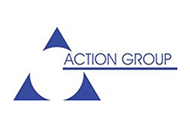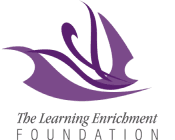Unlock Your Nonprofit's Potential with a Modern ERP
Meg Wilson: Welcome everyone! We are very excited to have you here today to talk about this timely topic. Personally, I’ve been talking to many organizations—especially nonprofits—who are eager to move off legacy, on-premise systems and transition to the cloud.
In particular, a lot of these nonprofits are using Microsoft Dynamics GP. With mainstream support having ended in January 2023, these organizations are now actively exploring the next stage in their ERP journey, which often leads to cloud-based platforms. Many of them are interested in Microsoft Dynamics 365 Business Central because they’ve had a good experience with Dynamics GP.
I’ll share my personal experience with GP later in this session. But for today’s agenda, we’ll cover most of the common questions. At the end, we’ll have a live Q&A to address anything we don’t get to.
Here’s what we have planned:
- Quick introductions
- A presentation from Microsoft on the cloud and nonprofit support
- A Sparkrock 365 software demo
My name is Meg Wilson, Senior Application Advisor at Sparkrock. I’ve been with Sparkrock for nearly seven years and in the nonprofit software space for over 17. I also bring direct experience as a former Director of Finance.
Joining me today is Henrik from Microsoft’s Tech for Social Impact (TSI) team. Henrik will talk about Microsoft’s support for the nonprofit sector and the role of Business Central.
After Henrik’s portion, I’ll provide a quick overview of Sparkrock 365, followed by a product demo from my esteemed colleague, James Faw.
To kick things off—Henrik, it’s over to you!
Henrik (Microsoft): Thanks Meg, and yes, I can confirm my slides are visible and audio is working.
It’s a privilege to be part of this event. I’ll start by sharing how Microsoft supports the nonprofit sector, what we’re seeing in the market, and how Business Central fits into that picture—especially for those of you currently on Dynamics GP.
First, an introduction to Tech for Social Impact (TSI). TSI is a dedicated unit within Microsoft that focuses 100% on the nonprofit sector. Our mission is to empower nonprofits to accelerate social impact—whether that's through education, hunger relief, women’s rights, or any other cause.
Globally, our impact last year included:
- $3.2 billion in discounted software, grants, and services to nonprofits
- $250 million donated by Microsoft employees to nonprofits
- Over 300,000 nonprofit organizations using Microsoft services through TSI
Across every industry—not just nonprofits—technology is playing an increasingly disruptive and strategic role. Organizations must respond faster, evolve business models, and adapt to global market volatility. That includes:
- New ways of engaging volunteers and donors
- Rising demand for hybrid work environments
- Greater pressure to deliver more impact with fewer resources
In the nonprofit sector, these challenges are even more pronounced:
- Donations are down 5% in many regions
- Service demand has increased by 30% since COVID
That creates a squeeze—more demand, less funding.
A recent study shows:
- 75% of nonprofits are experiencing increased demand
- 85% say technology is essential to their success
Digital transformation is now a necessity, not a luxury.
Here are three focus areas where nonprofits should invest:
- Improved Business Operations & Data-Driven Decisions
You need timely data to make fast, informed decisions. Real-time insights depend on a solid system of record and integrated analytical tools.
- Personalized Fundraising & Volunteer Management
Donor retention and volunteer engagement are harder than ever. Modern tools can help personalize outreach, streamline volunteer coordination, and strengthen stakeholder relationships.
- Holistic Digital Transformation
It’s time to rethink how your organization operates—every process, every workflow. Technology can enable sustainable, efficient growth.
Let’s also touch on security. Cybersecurity threats are rising, and all organizations—no matter the size—need modern infrastructure to stay protected.
A common challenge we hear: nonprofits are running multiple disconnected systems (fundraising, finance, HR, volunteer management). That leads to inefficiencies, poor reporting, and data silos.
That’s why many of you are now evaluating modern ERP systems.
Dynamics GP has served over 200,000 customers over the past 30 years. Microsoft has built on that legacy to create Business Central—a solution designed to support modern needs while leveraging everything we’ve learned from decades of serving nonprofits.
Business Central isn’t a brand-new product. It’s a continuation and evolution of that legacy, designed to support nonprofits as they move into the next era of ERP.
People ask what's the next thing after GP and the answer here is really Dynamics 365 Business Central. It's the evolution of NAV and GP. It's our business management solution in the cloud for small and medium-sized businesses, including nonprofits. It's a cloud-based solution that really supports and drives a lot of value to our customers.
As mentioned before, we see a lot of those challenges in the market, and we see that we can address them with Business Central. It's about adapting to the new world reality, making smart decisions based on real-time data, and ensuring performance through automation. This means having a solid foundation to grow moving forward.
One of the key benefits of moving from an on-premise solution to the cloud is capturing opportunities like process automation, guaranteed uptime, ongoing maintenance, and secure infrastructure. These benefits are why thousands of customers have moved from GP and NAV to the cloud.
But there's more to this than just three bullet points. Digital transformation means understanding how a suite of world-class applications can help nonprofits thrive. Business Central is not a standalone solution. It sits at the core of Microsoft’s ecosystem—built on Azure, integrated with Microsoft 365, and compatible with Office tools many of you already use.
Looking to the future, we're focused on delivering a world-class user experience. Business Central is intuitive, integrates with Office 365, and connects with both Microsoft and third-party solutions—giving you everything you need to make informed decisions in real-time.
And yes, AI is transforming how we work. Microsoft is committed to supporting nonprofits with AI-driven tools that optimize efficiency and help achieve mission success. We also have strong partnerships with industry-specific solution providers like Sparkrock. Our partners know both the technology and the nonprofit space, and they help translate that into real-world results.
Now, Sparkrock's mission is to provide innovative ERP solutions tailored for nonprofits. Many ERP systems are too slow and complex for nonprofit needs. Sparkrock focuses on structured implementation, strong sector support, and community-based learning.
We're part of Microsoft's elite embedded program—only a few partners in North America are. This status allows us to deeply integrate with Microsoft technologies. Our solution spans 18 modules—all part of a single integrated database built within the Microsoft stack.
What does this mean for you? You get the best of both worlds:
- Horizontal platform features from Microsoft (security, privacy, mobility, interoperability)
- Vertical specialization from Sparkrock (nonprofit-specific functionality and best practices)
Our customers benefit from Sparkrock’s user groups, dedicated customer success managers, and community knowledge sharing. And because we meet Microsoft’s coding standards, you know you're getting a high-quality, reliable product.
Speaking from personal experience, I know the struggles nonprofits face: too many disconnected systems, slow reporting, lack of usability, compliance issues, and unscalable spreadsheet workarounds. I lived it. As a former director of a nonprofit funded by multiple government levels and private donations, I pulled many all-nighters creating reports with our outdated systems.
I eventually led an IT transformation, selecting Dynamics GP. For GP users here today, you’ll know how game-changing SmartList Builder was. It gave me my evenings back. That experience inspired me to help other organizations do the same—and that’s why I joined Sparkrock.
We now support a wide range of nonprofits—education, health and human services, and more. Despite sector differences, these organizations face the same challenges, and Sparkrock is here to help solve them.
Meg (Sparkrock):
Move to the next slide—I think—oh, we’ve got a blank one in there for some reason. There we go. I think Ava's got a poll that's going to pop up here. We're using Microsoft Teams for the first time, so bear with us.
[Poll appears onscreen]
“What concerns do you have moving to a Cloud solution provider?”
Please go ahead and answer the question, and I believe Ava will share the results shortly.
Ava:
Meg, just jumping in—we’re having some issues with the poll. It’s working for some, not for others. Let’s skip it and continue with the rest of the presentation.
Meg:
Okay, no problem. We’re trying this out for the first time on Teams, so we’ll make improvements next time.
Now—how can Sparkrock 365 help?
I’m going to turn it over to James, who’ll show how we help nonprofits by:
- Seamlessly integrating with Microsoft 365 products and services
- Proactively managing spend
- Providing access to real-time data (including through Power BI)
- Offering a personalized, role-based user experience
He’ll walk through the different modules we've built on top of Dynamics 365 and then jump into the product demo.
Ava:
The poll is still showing for some folks. If it’s on your screen, go ahead and answer it—that should remove it.
Meg:
Okay, it’s on my screen now. Looks like the top concern is integration with existing systems—something both Henrik and I already spoke to.
James:
Thanks Meg, and thanks Henrik. Let’s take a deeper look at what Sparkrock 365 looks like.
Here’s the full footprint of what Sparkrock 365 offers.
We’ll focus on the financial modules in today’s demo, but we also offer HR and payroll capabilities.
The benefit of having all these pieces in one system is that they work together:
- A new grant added in Grant Management automatically updates the general ledger.
- If that grant is for purchases, it’s instantly available for requisitions, budget checks, and encumbrances.
- If it’s for staffing, it ties into HR for time entry or positions.
- All of that flows into payroll, then back into financial reporting.
It’s seamless.
Now, many of you are familiar with Business Central. Let’s highlight what’s different in Sparkrock 365.
We’ve categorized our platform into three levels:
- Lightly modified areas (e.g., cash management, AR, inventory)
- Heavily enhanced areas (where over 50% of daily-used capabilities are added)
- Completely new modules, like:
- Fund accounting
- Grant/project tracking
- Requisitions
- Commitments and encumbrances
- Employee expenses
- Most HR/payroll tools
Most traditional systems built for for-profits focus on sales or inventory—not spend tracking. That’s where Sparkrock stands out. We track real costs—grants, time, requisitions—end to end.
Let me show you what that looks like in the system.
Here’s Sparkrock 365, built on Business Central.
- It’s cloud-based
- Accessible anywhere
- Highly secure in Azure
- Integrated with your Microsoft 365 tools and Azure Active Directory
Let’s jump into the Chart of Accounts.
I’ll search for accounts related to "programs."
Here’s what that looks like:
- You see the total budget, commitments, encumbrances, and actual spend
- Commitments = approved internal spending (usually tied to requisitions)
- Encumbrances = external obligations (typically tied to POs or contracts)
- Net change = actuals (i.e., invoices paid)
Users can:
- Drill into each layer to view the source (e.g., PO #6 or #1019)
- Take action (e.g., close POs to release encumbrances)
This kind of visibility—seeing the full budget lifecycle—is often missing in legacy systems.
Now, a quick word on GL structure.
Many of you using Dynamics GP are familiar with a segmented GL—long strings of dimensions that define funder, program, location, etc.
Sparkrock 365 gives you the best of both worlds:
- A hybrid GL that combines segmented and logical models
- We let you define account sets and run budget/actual/encumbrance reporting at that level
- You can copy sets between programs and manage static dimensions easily
This gives you both control and flexibility—especially helpful when transitioning from GP.
James (Sparkrock):
Another key Sparkrock 365 feature we’ve built for our customers is distributed access.
In most nonprofits, budget management is decentralized. Different people are responsible for specific departments, grants, or cost centers. Sparkrock 365 supports this by allowing you to define custom views—for example, a report filtered to just the "Specialized Settlement Support" grant. You can:
- Set the relevant GL accounts and project codes
- Assign access to specific users
- Layer security permissions so each user sees only what they’re allowed to
This supports real-time, on-demand reporting—empowering users to make data-driven decisions instead of waiting for month-end spreadsheets that are already outdated.
Let me show you what that looks like from a department manager's perspective.
I'm now logged in as a department manager. This role center is filtered by my security settings.
If I want to check my budget:
- I go to Reporting & Analytics > Reports > Overview
- I can see my program expenses, budget, commitments, encumbrances, and net change
- I can drill into each line to see source documents—like POs or invoices
- If there are attachments (e.g., invoice scans), I can view them right from this screen
This gives users proactive visibility—reducing calls to finance and improving responsiveness. For example, if a vendor calls me to ask about an invoice, I can:
- Open my invoice list (filtered by my permissions)
- Search by vendor and see status (paid or unpaid, check number, etc.)
- Only see line items charged to my department—even on shared invoices
Security is enforced at the document line level, not just the document.
We’ve also added a purchase requisition workflow with real-time budget checks.
Here’s a quick demo:
- I enter a new requisition (e.g., for meeting supplies)
- Select the account set (drop-downs are also security-filtered)
- Enter line items
Now I submit the request. I didn’t check the budget ahead of time (typical busy manager behavior!), but Sparkrock does it for me automatically. It flags:
- One line as over budget by $61,000
- One line as within budget
You can configure this as a warning (like here), an error, or require additional approval.
And if I want to understand why I'm over budget, I can drill down right away to see the exact transactions contributing to the variance.
So in summary:
- Users get visibility into budgets right when they need it
- It supports distributed access and real-time accountability
- It helps organizations move from reactive reporting to proactive decision-making
Meg:
Thanks James! That was a great overview. You hit all the key points in a short time. For those interested, there will definitely be an opportunity to go much deeper.
Let’s open it up to Q&A. We’ve already got a couple of questions:
- Can you indicate how this platform compares to the GP QR platforms used by healthcare organizations through CCIM?
- Is this system structured to support OMRS reporting and chart of accounts?
Meg (to James):
James, I think you’re the best person to answer that one.
James:
Putting me on the spot! I have to admit, some of those acronyms aren’t entirely familiar. I believe OMRS refers to Ontario reporting, and I do remember the Ontario healthcare GP deployments—I worked in that space at the time.
We may need to follow up on the specifics of the GP QR platform migration. That was a very specific GP deployment. But to James's earlier point, Sparkrock 365 offers much more flexibility due to our dimensional reporting model, so we may be able to accommodate similar structures.
James:
On the earlier question about GP QR and OMRS, we’ll need to follow up offline. That deployment was quite specific to Ontario healthcare, and we’d want to better understand your environment before giving a definitive answer.
Meg:
Thanks, James. Another question we received was: Does analytical accounting carry over from GP to Business Central?
James:
I’m not entirely sure what GP’s Analytical Accounting module includes in detail, but Sparkrock 365 does support:
- Unlimited dimensions, with 8 inline (like columns in Excel)
- One of those can be defined as a fund, with automatic due to/due froms
- Built-in financial statement reporting
- Flexible roll-ups by any dimension, time, or account
We’ve replaced GP many times and offer strong analytical capabilities within Sparkrock 365.
Meg:
We also had a question that comes up often: What kind of effort is required to migrate from GP to Sparkrock 365?
James:
For core financial components, the typical GP migration takes 3–6 months, depending on your team’s availability and readiness.
- Faster if your team can commit time and make setup decisions quickly
- Slower if you need more support or time between phases
We know most teams can’t fully dedicate staff to an implementation, so our team takes on the heavy lifting—especially around data transformation. We aim to work with your data as-is, minimizing the need for deep data cleansing on your end.
Meg:
Another popular question: What replaces Management Reporter—or even FRx, for those still on it?
James:
Sparkrock 365 has native reporting tools built right in, so you don’t need external reporting add-ons. These include:
- Reporting & analytics views, which can be filtered and secured by role
- Financial schedules (aka account schedules) for financial statements
- Power BI, which lets you build dashboards, combine Sparkrock data with other sources, or even pull in public datasets
We’ve seen customers use Power BI creatively—for example, to enhance grant applications with sector data from public sources. It’s much more than just a Management Reporter replacement.
Eva:
Hi folks—just a quick note. We’ve had a few more questions come in. We’re almost out of time, but we will follow up by email after the session with answers and links.
Meg:
Great. One last quick question: Does Sparkrock implement directly, or through partners?
James:
We implement directly. So just reach out to us and we’ll take it from there.
Meg:
Another clarification came in: Can you explain again how Sparkrock’s chart of accounts differs from Business Central?
James:
Yes, this is key for GP users.
GP uses a segmented GL—a long account string (e.g., fund–account–project–cost center).
- Pros: precise control over allowed combinations
- Cons: limited multi-year or cross-fiscal reporting
Business Central uses a logical chart of accounts, with individual dimension values.
- Pros: great for flexible pivot-table-like reporting
- Cons: limited ability to restrict combinations (e.g., Fund A should never go with Program B)
Sparkrock 365 offers a hybrid model:
- Combine flexible reporting with advanced dimension controls
- Ensure you meet compliance needs (e.g., when funding comes with restrictions)
- Control how data is combined while still enabling modern, multi-year visibility
This is critical for our nonprofit and public sector customers, where funds are tightly regulated.
Eva:
We’re out of time but will follow up with answers to any outstanding questions. You’ll also receive a link to today’s recording.
Meg:
Thanks again everyone for your time and all the great questions! For more information, visit sparkrock.com, or email us directly at info@sparkrock.com. We’d love to connect.
Have a great rest of your day!

%20(2).png?width=150&height=150&name=Meg%20Wilson%20(4)%20(2).png)





.png)




